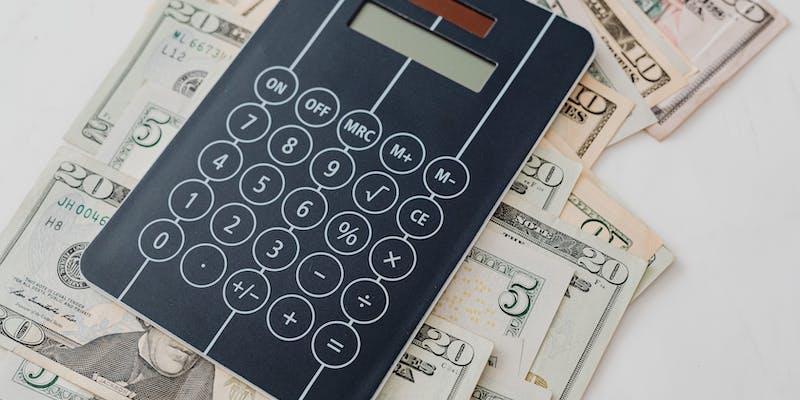Forex Rollover Rate Explained
Nov 19, 2023 By Susan Kelly
Forex rollover rates are essential for traders holding positions after trading hours in the dynamic forex market. Interest earned or paid for overnight currency pair holdings is called the rollover rate. This becomes crucial due to the global nature of the Forex market, where time differences play a pivotal role.
Specifically, any position open past 5 p.m. EST is subject to these rates. Understanding forex rollover rates is not just a matter of technicality but a vital part of a trader's strategic planning. It impacts the overall profitability of trades, especially for strategies involving long-term positions.
Incorporating a clear grasp of currency rollover rates into trading decisions is not just best practice; it's essential for any serious Forex trader. This knowledge equips traders with an understanding of how overnight market dynamics can affect their portfolios.
The Mechanics Behind Rollover Rates
Forex rollover rates must be understood in their fundamentals. Forex Trading involves borrowing one currency to buy another. Interest rates arise from this currency interaction. Thus, the forex rollover rate is the difference between these currencies' interest rates.
When trading EUR/USD, the rollover rate depends on the difference between Eurozone and US interest rates. Traders need to stay updated with the best IRA rollover CD and currency rollover rates, as these can significantly affect the profitability of their trades.
It’s not just about understanding the numbers; it’s about interpreting what these rates signify in the broader economic landscape. Keeping a close eye on the best IRA rollover CD rates can offer insight into market trends and aid in making more informed trading decisions.
The Formula for Calculating Rollover Rate

Forex rollover rate is crucial. To calculate this rate, one employs a straightforward yet effective formula. This formula is the backbone of understanding forex rollover rates, a key aspect for any trader. The rollover rate is determined by:
R (rollover)= R (base currency)− R(quote currency) / 365×E
The interest rate of the base currency is represented by R (base currency). This rate is crucial to forex rollover rates. R (quote currency) represents the interest rate of the quoted currency.
Understanding currency rollover rates is vital for traders considering the best IRA rollover CD rates for long-term investments. A year is 365 days, standardizing the calculation. Finally, forex rollover rates depend on the exchange rate. E. Traders, especially those seeking the best IRA rollover CD rates, use this formula to calculate a currency pair's overnight cost or gain.
Real-World Example
For the practical application of this formula, let's examine the NZDUSD currency pair, a common subject in discussing forex rollover rates. Assume on a given day, the exchange rate is 0.69. Here, the NZD overnight interest rate is 1.75%, and the USD federal funds rate is 2.4%.
These rates are vital in understanding the dynamics of currency rollover rates. For a position of 100,000, we calculate the interest for both NZD and USD. This scenario is typical for traders looking into the best IRA rollover CD rates, where understanding the nuances of forex rollover rates is crucial.
The process involves converting these interests into a single currency value, which provides the rollover rate in pips. This practical understanding is vital for anyone with forex rollover rates, particularly those considering the best IRA rollover CD rates for their investment strategies. Such real-world examples provide a clear perspective on how forex rollover rates impact currency trading and investment decisions, highlighting their importance in the financial sector.
Limitations and Considerations
Forex market navigation requires understanding forex rollover rate limitations and considerations. The actual forex exchange rate may differ from the calculated forex rollover rates. This variance often comes from the exchange's interpretation of currency short-term interest rates. Due to such discrepancies, a trader seeking the best IRA rollover CD rates may get a partial market picture.
Geopolitical events, economic announcements, and central bank decisions also affect Forex rollover rates. These factors can cause sudden and unpredictable currency rollover rate changes, affecting overnight position profitability. Traders must monitor global events that may impact forex rollover rates.
Market liquidity and economic conditions affect currency rollover rates. Currency rollover traders should also know the countries' interest rate trends and economic policies. By monitoring these variables, traders can make better decisions and predict forex rollover rates.
Rollover Rate Management Strategies in Foreign Exchange Trading

The Application of Hedging Methods
Hedging strategies help offset forex rollover rates. To avoid rollover rate losses, traders hedge by opening opposite positions.
Forex rollover rates fluctuate in volatile markets, making this a helpful method. If a trader expects a negative rollover rate on a long position, they may short a related currency pair.
This can mitigate rollover effects. This approach needs careful analysis and timing, especially using the best IRA rollover CD rates as a risk benchmark.
Comparative Analysis of Interest Rates
Managing currency rollover rates requires monitoring interest rate differentials. These differentials drive Forex rollover rates.
By monitoring central bank announcements and economic indicators, traders can predict interest rate changes and forex rollover rates. If a country is expected to raise interest rates, its currency may attract investors, resulting in better rollover rates.
Foresight lets traders capitalize on market changes before they happen. Regularly comparing interest rate differentials with the best IRA rollover CD rates can broaden the market perspective.
Strategic Position Sizing
Forex traders benefit from adjusting position sizes based on rollover rates. Traders can minimize risk and maximize gains by matching position sizes to currency rollover rates.
A more prominent position may be justified if a positive rollover rate is expected, while a more minor position may be prudent if a negative rollover is expected.
This strategy optimizes returns in line with forex rollover rates and maintains a balanced portfolio by considering the best IRA rollover CD rates for diversified risk. However, position sizing must match risk management and financial goals.








